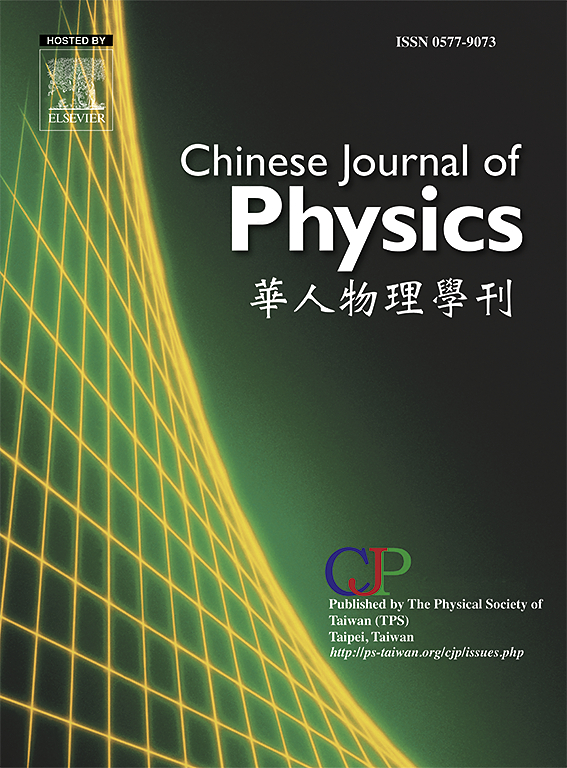Effects of stochastic electromagnetic fluctuation on signal detection of astrocyte-dressed neuron
IF 4.6
2区 物理与天体物理
Q1 PHYSICS, MULTIDISCIPLINARY
引用次数: 0
Abstract
Signal transmission in the nervous system is frequently studied considering its different biological or environmental characteristics. Recent studies have revealed that dynamic neuronal behaviors in the brain are significantly modulated by both astrocytes and magnetic fluctuations. Moreover, the contact of the noisy electromagnetic environment with the biological nerve cells is also inevitable. However, the effects of stochastic electromagnetic fluctuation on signal detection in an astrocyte-dressed neuron have never been studied in detail. In this study, an improved astrocyte-dressed Hodgkin–Huxley neuron model subjected to electromagnetic fluctuation is examined. Sinus-Wiener limited noise is used to model the random structure of the electromagnetic field. Simulation results show that, without considering noisy electromagnetic induction, the optimum value of the electromagnetic feedback gain parameter and the weak signal frequency used optimize the response of the astrocyte-dressed Hodgkin–Huxley neuron to a weak signal. However, when electromagnetic noise is included in the model, it is found that as the electromagnetic noise intensity increases, the signal detection performance of the model decreases significantly compared to the without-noise case. The most interesting result of the study is the demonstration that electromagnetic fluctuations have the power to accelerate slow astrocyte dynamics. When electromagnetic noise is not included in the model, the concentration of in the astrocyte increases with the increasing in electromagnetic feedback gain. By considering noisy electromagnetic model, the concentration of in the astrocyte increases with increasing the electromagnetic noise strength. Moreover, the duration for the concentration to reach the maximum level is significantly shortened. The results of the study show the degree to which the membrane potential of the neuron depends on changes in transmembrane current, astrocyte-induced regulation, and even the effect of electromagnetic induction and noise within the cell.

求助全文
约1分钟内获得全文
求助全文
来源期刊

Chinese Journal of Physics
物理-物理:综合
CiteScore
8.50
自引率
10.00%
发文量
361
审稿时长
44 days
期刊介绍:
The Chinese Journal of Physics publishes important advances in various branches in physics, including statistical and biophysical physics, condensed matter physics, atomic/molecular physics, optics, particle physics and nuclear physics.
The editors welcome manuscripts on:
-General Physics: Statistical and Quantum Mechanics, etc.-
Gravitation and Astrophysics-
Elementary Particles and Fields-
Nuclear Physics-
Atomic, Molecular, and Optical Physics-
Quantum Information and Quantum Computation-
Fluid Dynamics, Nonlinear Dynamics, Chaos, and Complex Networks-
Plasma and Beam Physics-
Condensed Matter: Structure, etc.-
Condensed Matter: Electronic Properties, etc.-
Polymer, Soft Matter, Biological, and Interdisciplinary Physics.
CJP publishes regular research papers, feature articles and review papers.
 求助内容:
求助内容: 应助结果提醒方式:
应助结果提醒方式:


